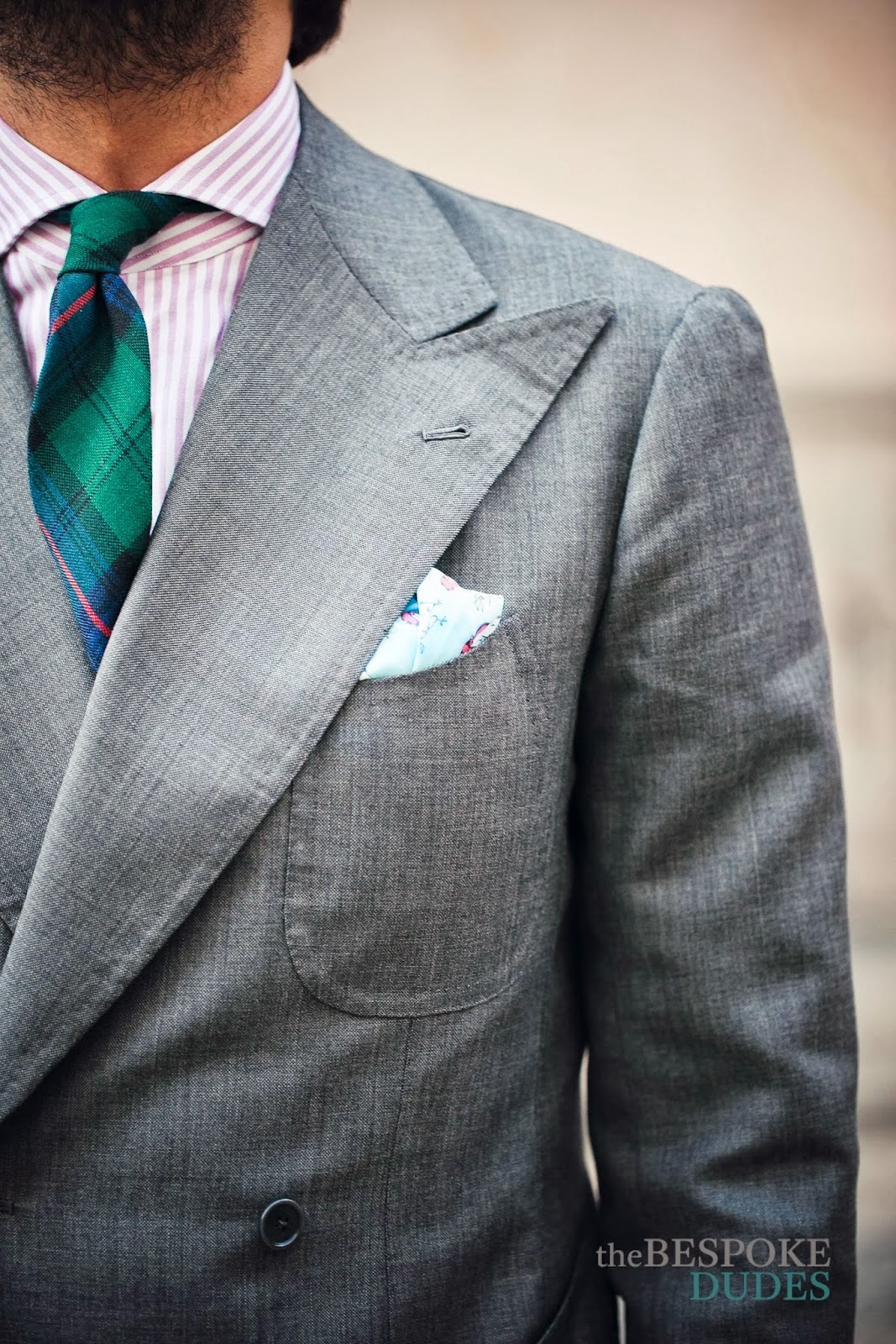How to distinguish an hand-made lapel from a machine-made one? And what is the difference between Neapolitan and Milanese tailoring when it comes to jacket collars? The answers to these (surely) harassing questions are in my third article for Natural Gentleman!
Come riconoscere un bavero fatto a mano da un altro fatto a macchina? E che differenza c'è tra la sartoria napoletana e quella milanese quanto ai colli delle giacche? Le risposte a questi dubbi che (sicuramente) vi attanagliano nel mio terzo articolo per Natural Gentleman!
The Article - L'articolo
Proportions of elegance: lapels and collars
The jacket lapel has an unsung charm. The fashion system, with some infrequent exception, wants it slim, narrow, almost invisible. The tailoring, fortunately, makes wide, masculine, beautiful lapels, that are suitable for the chest and the personality of the customer. A tailor once said: “The more the lapel is wide, the more the jacket will look slim”, meaning the optical effect of a big lapel covering the front of the jacket. Normally, the width should be proportioned to the stature of the person, so ten, eleven or twelve centimeters are quite common in tailors’ shops; on the other hand, ready to wear jackets feature lapels eight, seven and sometimes even six centimeters wide.
The peak lapel, typical of the double-breasted jacket, is more formal, but can also give a stylish flair to a serious mono-breasted business suit. Apart from being notched, shawl or peak, the sartorial lapel is fascinating also because it is designed by hand on the papermodel. The result is a different “belly” and tip for every jacket. Some tailors make it more heavy, putting canvas, horse hair and camel hair inside, according to the tailoring tradition in Milan; some others, as the Neapolitans, make it lighter, with just a layer of a 150 gr canvas; finally, some others don’t even use canvas for their lapels, preferring the cotton. A tip: if you want to know whether a lapel is sartorial or not, look underneath it. You will find a cloud of stitches blocking the fabric on the canvas. Pure poetry!
Moreover, another distinctive feature of the jacket is the collar. Neapolitan tailors make it very high, whereas nordic schools are more penchant to make it low. It is a very delicate area of the jacket: it is likely that an expert will look at it in order to see if the jacket fits well or not. In the first article we talked about rules of elegance. Well, a unanimously approved rule is that the collar of the jacket should always follow the shirt collar, when the jacket is buttoned, despite the movements. These and other details make the difference between a “just expensive” jacket and a “well done” one.
____________________
Le proporzioni dell’eleganza: Baveri e Colli
Il bavero della giacca ha un fascino incompreso. La moda, con qualche rara eccezione, lo vuole piccolo, stretto, quasi infinitesimale. La sartoria, per fortuna, lo fa largo, bello, adeguato al torace e alla personalità di chi lo indossa. Una volta un sarto disse: “Più il bavero è largo, più la giacca sembrerà stretta in vita”. Si riferiva all’effetto ottico per cui un bavero grande copre di più il davanti della giacca, facendolo sembrare più piccolo. Di norma, la sua larghezza dovrebbe essere proporzionata alla statura della persona. Dieci, undici o dodici sono i centimetri preferiti in sartoria, contro gli otto, i sette e a volte anche sei centimentri delle giacche di confezione.
Il bavero “a lancia”, tipico del doppiopetto, è più formale, ma può anche dare un tocco di stile ad un semplice abito mono petto. Tradizionale, “a lancia” o "a scialle" che sia, la magia del revers sartoriale sta nel suo disegno a mano sul cartamodello. Il risultato è una “pancia” o una punta ogni volta diverse. C’è chi lo fa più pesante, mettendo all’interno tela, crine di cavallo e pelo cammello, come da tradizione nella sartoria milanese; c’è chi lo fa leggero, come a Napoli, inserendo solo uno strato di tela da 150 grammi; c’è chi, infine, non mette nemeno la tela all’interno, preferendo il cotone. Un consiglio: per avere conferma che un bavero è sartoriale, bisogna guardare al di sotto. Si troverà una nuvola di punti con la funzione di fermare il tessuto sulla tela. Pura poesia!
Tratto distintivo della giacca, inoltre, è il collo. La sartoria napoletana lo preferisce alto, mentre le scuole sartoriali nordiche sono più inclini a farlo basso. E’ una zona particolarmente delicata della giacca, perché è lì che l’occhio esperto cade per vedere se il capo ha una buona vestibilità. Nel primo articolo abbiamo parlato di regole non scritte dell’eleganza. Bene, una regola unanimemente approvata in questo campo è sicuramente quella per cui il collo della giacca non deve “scollare”: la giacca, quando è abbottonata, deve stare attaccata al colletto della camicia, specialmente sul dietro, nonostante i movimenti. Questi ed altri dettagli fanno la differenza tra un capo solo “costoso” e un capo “fatto bene”.
HERE the article on Natural Gentleman (ENG): http://www.naturalgentleman.com/en/blog/post/proportions-of-elegance-lapels-and-collars/36
QUI l'articolo su Natural Gentleman (ITA): http://www.naturalgentleman.com/it/blog/post/le-misure-delleleganza-baveri-e-colli/35
If you like what we are doing here, please consider following TBD on Facebook - Tumblr - Instagram - Twitter
Bespoke Hugs,
Fabio
The Proportions of Elegance: Collars and Lapels
25 February 2014







